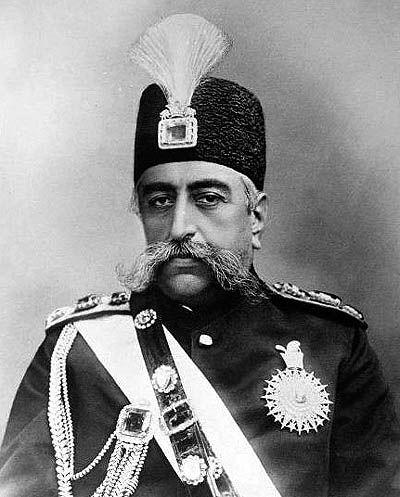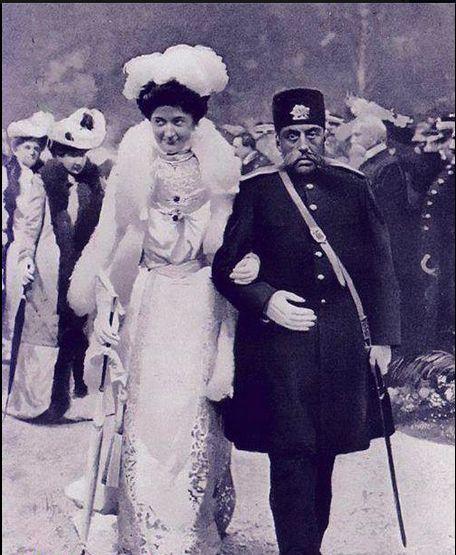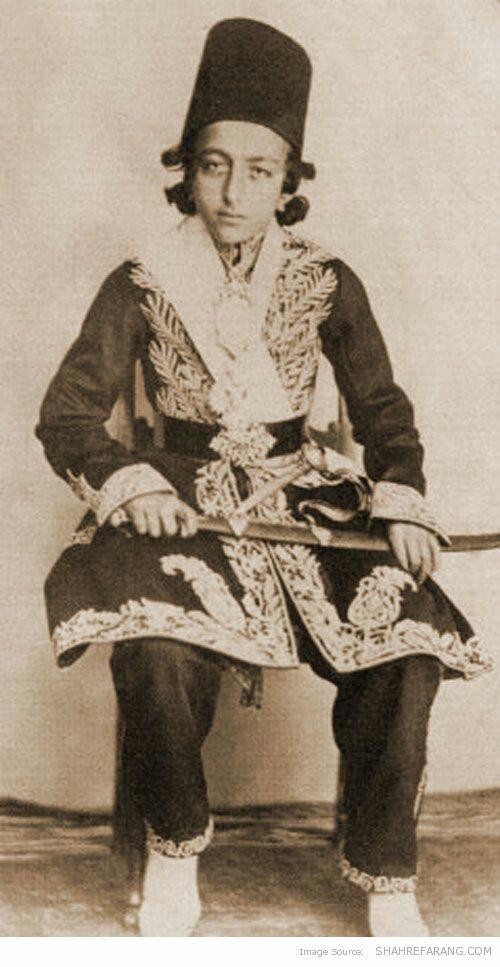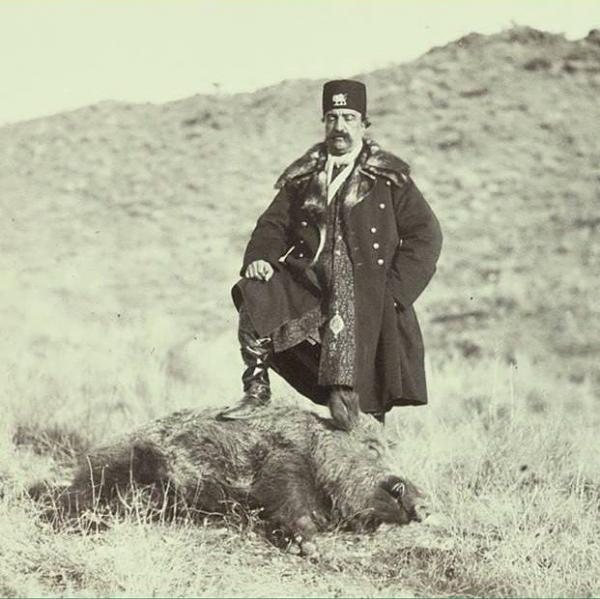Complete biography of Muzaffaruddin Shah Qajar

 Muzaffaruddin Shah
Muzaffaruddin ShahOne of the kings of the Qajar dynasty was Muzaffar al-Din Shah, he succeeded his father Naser al-Din Shah Qajar to the throne. He was in charge of the kingdom of Iran for ten years, and because of the events that happened during his reign, his reign can be examined.
An abstract of Mozafaruddin Shah's biography:
Reign: May 12, 1275 – January 12, 1285
Coronation: 1275 Solar, Badgir Mansion, Tehran
Successor: Mohammad Ali Shah Qajar
Born: April 3, 1232
Tabriz, Iran
Died: 12 January 1285
Tehran Iran
Tomb: Karbala
Wives: Tajul-Muluk Ummul-Khaqan
Ashraf Malik Mrs. Sarwarul-Sultaneh
Masoumeh Khanum Nezhat al-Sultaneh
Noor Al Doulah
Delpasand Baji
Sharaf al-Dawlah
Mahin al-Sultaneh
Mahin al-Dawlah
Family: Qajar
Father: Naseruddin Shah
Mother: Shkoh al-Sultaneh
Religion: Islam, Shia
Biography of Muzaffaruddin Shah:
Muzaffar al-Din Shah was born in Tabriz on 1/3/1232 and was the fourth son of Naser al-Din Shah Qajar and his viceroy. Naser al-Din Shah's reign was very long, that's why Muzaffar al-Din Shah spent a long time (40 years) as the Shah's viceroy until he ascended the throne after his father's death and became the fifth king of Iran from the Qajar dynasty.
The period of his rule reached ten years and important events happened during this time, including; He pointed out the granting of concessions to foreign governments, the establishment of the National Council, the King's European trips, the signing of the constitutional decree, etc.
Naser al-Din Shah was killed by Mirza Reza Kermani, and Muzaffar al-Din Shah became the king after 40 years of his reign, and in the first step, he came from Tabriz to Tehran.
 Muzaffaruddin Shah and the Queen of Italy in 1902
Muzaffaruddin Shah and the Queen of Italy in 1902Muzaffaruddin Shah family:
Muzaffar al-Din Shah was the son of Naser al-Din Shah and Shokoh al-Saltaneh, his maternal grandfather Fathullah Mirza Shua al-Saltaneh was the 36th son of Fath Ali Shah. Muzaffar al-Din Shah was not the first son of Naser al-Din, and before him, three of his brothers had reached the province of Adi, all of whom died in childhood, their names were Sultan Mahmud Mirza (died on 25 Jumadi al-Thani 1265), Moin al-Din Mirza (died on 2 Rabi al-Awl 1273) and Muhammad Qasim Mirza ( passed away in 1274), in addition to these brothers, there was Masoud Mirza Zal-ul-Stan (son of Naser al-Din Shah from Eft al-Sultaneh), who was three years older than Muzaffar al-Din Shah, but because his mother was not of Qajar descent, he could not reach the position of the province of Adi. When Muzaffaruddin Shah reached the age of four, he was appointed to the government of Azerbaijan and about a year later, on the date of Dhu Hijjah 1278, he was officially crowned by his father.
Muzaffaruddin's crown period:
During the reign of Muzaffaruddin Shah, the Ottoman Kurds under the leadership of Sheikh Abdullah Nahri revolted in Azerbaijan, this uprising took place in the territory of Muzaffaruddin Mirza, so the army was sent to defend and faced defeat. Naseruddin Shah, who was upset to hear this defeat, ordered Crown Prince to come to Tehran.
During this period, Muzaffaruddin Shah tried to establish a friendly relationship with the elites and those who sought reforms in the Naseri era. Muzaffaruddin Shah's progressive thinking encouraged the intellectuals to progress in this field.
 Muzaffaruddin Shah Qajar
Muzaffaruddin Shah QajarNaser al-Din appointed his son to the administration of Azarbaijan and Adi province, and during the 50th anniversary of his reign, he was killed by Mirza Reza Kermani's bullet on the 17th day of Dhul-Qa'da, 1313 AH. At that time, Amin al-Sultaneh was in charge of the presidency, and the body of the king was buried in He transferred to Tehran and spread the rumor of his injury among the people.
These rumors caused chaos in the city and people attacked the bakeries and looted the markets. In order to calm the tense atmosphere of the city, Amin al-Sultaneh decided to establish a kind of martial law in the city with the help of the head of the Cossack forces of Tehran.
Amin al-Sultaneh contacted the ambassadors of European countries and informed them by telegraph about the death of Naseruddin Shah. After informing the European governments about Iran's dire financial situation, Russia and England promised financial assistance to Iran. England sent condolences for the news of the death of Naser al-Din Shah and congratulated Muzaffar al-Din Shah on reaching the throne, and also announced to Amin al-Sultaneh that he could help them by paying a loan to Iran in this regard.
 Biography of Muzaffaruddin Shah Qajar
Biography of Muzaffaruddin Shah QajarThe reign of Muzaffaruddin Shah:
After the murder of Nasiruddin Shah Muzaffaruddin Mirza, he ascended to the throne and because he did not have a confidant around him, he kept the courtiers of his father's era in their positions and positions. He also chose Amin al-Sultaneh as the chancellor and entrusted him with the administration of the country's affairs.
Amin al-Sultaneh requested a loan from Russia so that he could send the Shah on a foreign trip, and this was considered his first step. The Russians paid this loan to Iran, but they specified conditions that included; Failure to receive loans from other countries until the loan is paid in full, as well as the customs revenue of Iran, except the customs of the Persian Gulf, should be provided to the Russian Borrowing Bank. These conditions were accepted by Amin al-Sultaneh, the Shah went on a foreign trip and During this trip to Europe, he was assassinated but was not successful and survived.
During the reign of Muzaffaruddin Shah and in 1319 AH; The privilege of exploiting Iranian oil, except for the states of Azerbaijan, Khorasan and Estrabad, was awarded to William Darcy. He started oil extraction in Iran in 1321 and created the first oil well in Qasr Shirin. After this, Muzaffaruddin Shah agreed to change the Russian customs rate in Iran to 5%, and he again negotiated a loan. In 1320 and 1323 AH, the Shah went on his second and third trip to Europe.
Due to the pressures that were exerted on the people during the period of the chancellorship of Ain al-Dawlah and the kingdom of Muzaffar al-Din Shah Qajar, they sat down in the shrine of Abd al-Azim and Qom.
 Naser al-Din Shah Qajar, father of Muzaffar al-Din Shah
Naser al-Din Shah Qajar, father of Muzaffar al-Din Shah In the end, the people's patience ran out and their protest and freedom calls were raised all over Iran. Ain al-Dawlah was the prime minister of Mozafaruddin Shah at that time, which led to their protest because of his strict behavior towards the people. People with the leadership of clerics who were famous in that period such as; Seyyed Abdullah Behbahani, Seyyed Jamal Vaez, Sheikh Mohammad Vaez and Seyyed Mohammad Behbahani made their protest public and sat in the shrine of Hazrat Abdul Azim.
They had many requests that include; The bank incident and the hanging of merchants were protests against the actions of the Belgian government. These protests reached the ears of the king, and the king promised to fulfill them, but this matter did not come true, and it led to the second protest of the people. For the second time, the people together with the scholars sat in the shrine of Hazrat Masoumeh Bast and raised more demands, which eventually led to the resignation of Ain al-Dawlah from the ministry and finally Muzaffar al-Din Shah issued the constitutional decree on 14 Jumada al-Thani 1324 AH.
The first National Assembly was opened during the reign of Muzaffar al-Din Shah in 1324 AH. Most of the members of this assembly were from the ranks of the bazaars and guilds, and Sani al-Dawlah and then Wathuq al-Dawlah assumed the presidency.
At the time when the constitutional movement was established, against the wishes of chancellor Ain al-Dawlah, constitutionalism was agreed and Muzaffar al-Din Shah signed the decree of constitutionalism.
 Death of Muzaffaruddin Shah
Death of Muzaffaruddin ShahOn the passing of Muzaffaruddin Shah:
Muzaffaruddin Shah died ten days after the signing of the constitution, on January 12, 1285, at the age of 53, and was buried in Karbala. He was the last king of Iran who died in his country.
compilation: Cover biographical section






